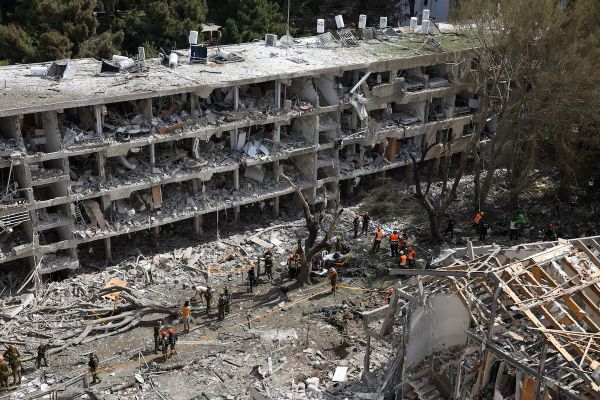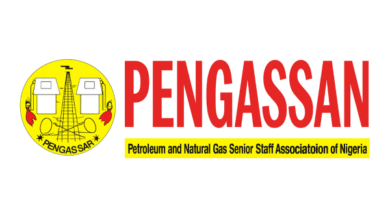U.S. Destroys Iranian Nuclear Sites in Dramatic Air Strikes: Global Tensions Soar, UN Warns of Radiological Catastrophe

In a move with potentially seismic implications for global security, U.S. President Donald Trump has confirmed that American forces launched coordinated airstrikes on three of Iran’s most critical nuclear sites—Fordow, Natanz, and Isfahan—on Saturday night. The strikes, which the White House described as a “spectacular military success,” have set the Middle East and much of the world on edge, amid rising fears of regional conflagration and nuclear fallout.
“Tonight, I can report to the world that the strikes were a spectacular military success. Iran’s key nuclear enrichment facilities have been completely and totally obliterated,” Trump declared in a televised address.
The president said the mission was designed to neutralize Iran’s nuclear enrichment capabilities, labeling the Islamic Republic “the world’s number one state sponsor of terror.” He emphasized that the U.S. was prepared to launch further strikes if Tehran does not capitulate to American calls for peace, warning that “future attacks will be far greater and a lot easier.”
Strategic Targets Hit, But At What Cost?
The Nuclear Sites targeted—Fordow, an underground fortress carved into a mountain; Natanz, Iran’s primary uranium enrichment plant; and Isfahan, which houses a uranium conversion facility—have long been viewed as the core of Iran’s nuclear infrastructure. The U.S. military reportedly used a mix of bunker-busting precision bombs and stealth aircraft to execute the strikes, which President Trump claimed “no other military in the world could have carried out.”
Independent military analysts suggest the operation marks one of the most aggressive and high-stakes U.S. air campaigns in the Middle East since the 2003 invasion of Iraq.
Israeli Prime Minister Benjamin Netanyahu swiftly praised the action on the Nuclear Sites, calling it a “bold decision that will change history.”
“Congratulations President Trump… your righteous might has reshaped the nuclear future of the region,” Netanyahu posted on social media.
UN Sounds the Alarm: ‘A Dangerous Escalation’
But the strikes have also drawn swift and sharp condemnation. UN Secretary-General António Guterres expressed grave concern over what he termed “a dangerous escalation in a region already on the edge.”
“This is a direct threat to international peace and security… There is no military solution. The only path forward is diplomacy. The only hope is peace,” Guterres warned.
Diplomats across Europe and Asia have echoed similar sentiments, urging restraint and calling for immediate de-escalation. With oil prices already surging and regional stock markets dipping, fears of retaliatory strikes and a wider military confrontation are growing.
IAEA Warns of Catastrophic Nuclear Fallout
Perhaps the most sobering assessment came from the International Atomic Energy Agency (IAEA), whose Director General, Rafael Grossi, briefed the UN Security Council on the fallout—both literal and figurative—of the attacks.
Grossi warned that the destruction at Natanz had caused internal radiological contamination and degraded critical safety systems. Though no external radiation release has yet been detected, the risks remain dire.
“At Bushehr, Iran’s only operational nuclear power plant, a direct strike or loss of power could trigger a core meltdown,” Grossi cautioned, referencing the facility’s proximity to civilian populations.
He added that the Tehran Research Reactor, if targeted, could endanger millions living in the capital.
“Nuclear facilities must never be caught in the fog of war… A protracted conflict risks triggering a nuclear safety disaster and unraveling the global non-proliferation regime,” Grossi warned.
Markets, Diplomacy, and the Road Ahead
While immediate military goals may have been achieved, analysts warn the geopolitical and economic aftershocks are only just beginning. Crude oil prices spiked over 12% in early Asian trading, and investor sentiment in major markets across Europe and the U.S. turned sharply negative amid fears of retaliatory cyberattacks and oil supply disruptions through the Strait of Hormuz.
Global powers, including China, Russia, and the European Union, have called emergency meetings to assess the fallout and explore mediation efforts.
“We are entering an unprecedented era where a military action against a nuclear-capable state may redefine international norms and alliances,” said Dr. Nasir Mahmoud, a global security expert at the Geneva Institute for Strategic Studies.
What This Means for Nigeria and the Global South
For energy-importing countries like Nigeria, the immediate concern will be the ripple effect on fuel prices, inflation, and currency volatility. The Nigerian government may face renewed pressure to fast-track its domestic refining capacity and diversify energy sourcing as global uncertainty deepens.
Moreover, the conflict poses risks to international investment flows, particularly in emerging markets already reeling from post-pandemic recovery and ongoing debt crises.
BOTTOM LINE:
The U.S. strike on Iran’s nuclear infrastructure marks a watershed moment in Middle East geopolitics—one that could reshape the global security architecture, threaten the fragile nuclear non-proliferation regime, and unsettle already jittery financial markets. As the world awaits Tehran’s response, the prospect of peace or wider war now hinges on high-stakes diplomacy—and time is running out.











